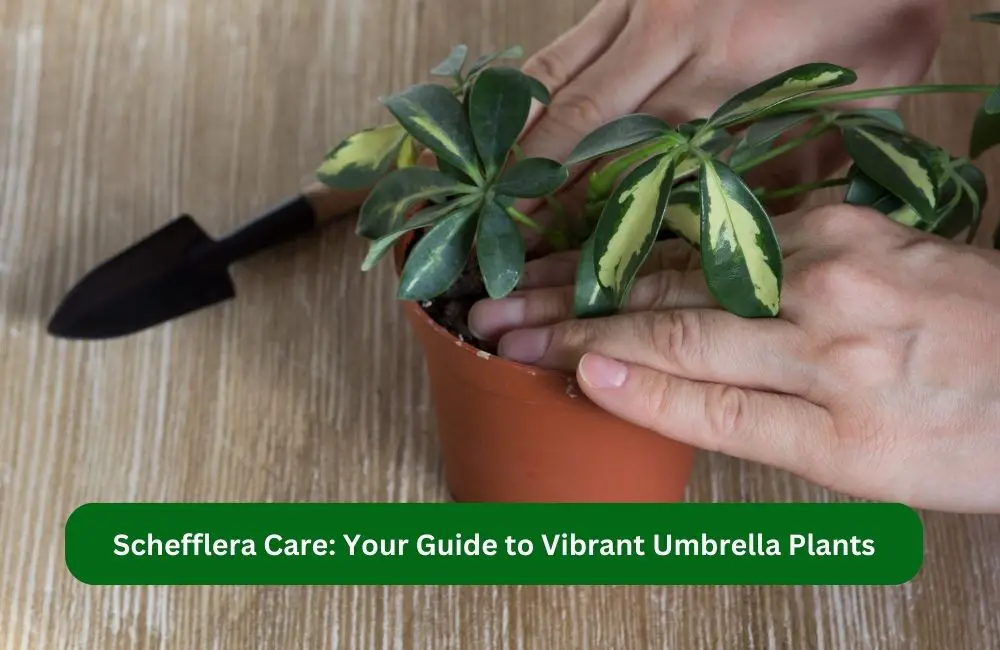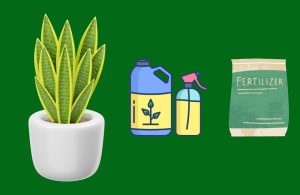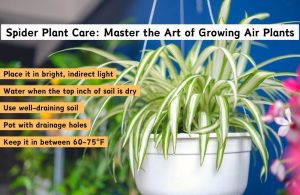This article covers the following areas –
- What is a Schefflera?
- Light Needs of Umbrella Plant
- Watering Needs
- Fertilizer and Pruning
- Dealing with Pests and Problems
- Final Thoughts
- FAQ: Schefflera Care

You’re in for a treat if you’ve recently become the proud owner of a Schefflera, commonly known as the Umbrella Plant. This stunning houseplant is not only a visual delight, but it’s also relatively simple to care for. Lucky for you, I’m here to share my hands-on experience with this verdant gem. By the end of this guide, your Schefflera will be thriving!
The Schefflera, commonly known as the Umbrella Plant, requires bright, indirect sunlight and moderate watering—allowing the soil to dry slightly between sessions. During its growing phase in spring and summer, apply a balanced liquid fertilizer monthly. Regular pruning promotes bushy growth.
For a deeper dive into the art of Schefflera care, including insights on pests, potential problems, and expert tips, continue reading. We offer a comprehensive guide tailored to ensure your Umbrella Plant thrives and flourishes in its environment.
What is a Schefflera?
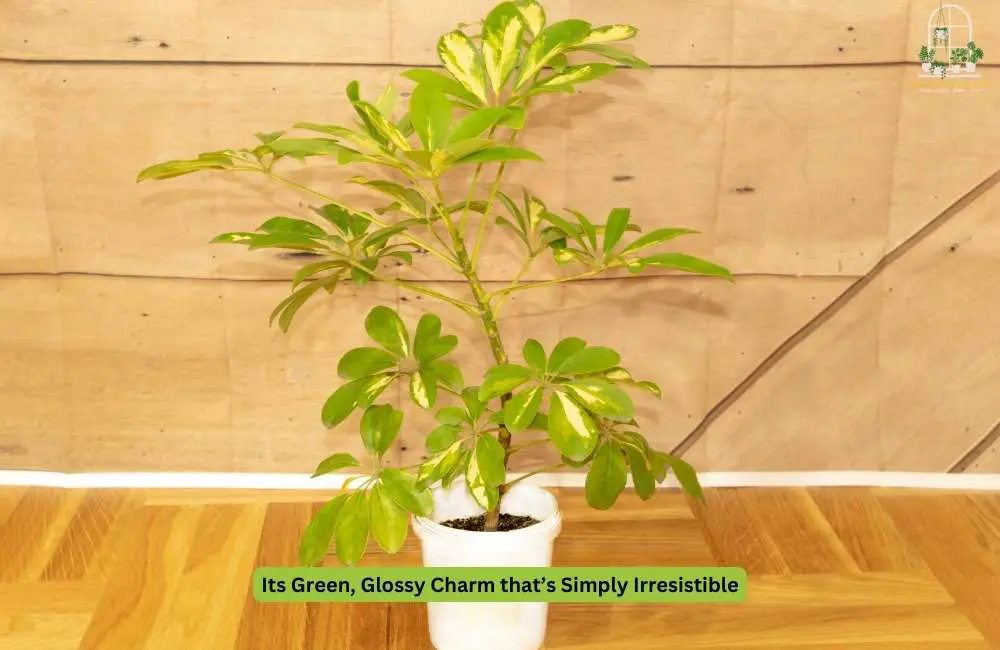
You know that feeling when you bump into someone and instantly feel a connection, but you’re not quite sure why? That’s how many of us feel when we first encounter the Schefflera. There’s something about its green, glossy charm that’s simply irresistible. But before we jump into the “how-tos” of looking after this gem, it’s time for some heart-to-heart introductions. Understanding the essence of this plant can make all the difference in how you care for it.
A Little Background on Our Star
I admit that Schefflera plants hail from the Araliaceae family – a bit of a tongue twister. But don’t let that lofty family name intimidate you. If you’ve ever been caught in the rain and opened an umbrella, you’ve already understood why our plant buddy here gets its popular nickname.
The ‘Umbrella Plant’ Nickname Decoded Each glossy, oval leaf on the Schefflera extends out in a pattern reminiscent of – you guessed it – an umbrella. Imagine the ribs of your rainy-day gear in a verdant, lively green. Nature is known for sneaking in functional design in the most unexpected places!
More than Just Good Looks
The Schefflera isn’t just a pretty face. There are some fascinating tidbits about its origins and characteristics that can genuinely elevate your appreciation for it:
- Global Citizen: While the Schefflera has become a global houseplant sensation, its roots (pun intended!) can be traced back to the subtropical regions of Taiwan and Australia.
- Variety is the Spice of Life: There’s more than one type of Schefflera. For example, the Schefflera arboricola is a dwarf variety, while the Schefflera actionphylla stands tall and proud.
- Nature’s Air Purifier: Beyond its visual appeal, the Schefflera also improves indoor air quality. Studies have suggested that it can help filter out pollutants like benzene.
Fun Fact Round-up
To round off our introductory session, here’s a quick table of bite-sized fun facts for your next plant-themed trivia night:
| Fact | Detail |
|---|---|
| Family Name | Araliaceae |
| Nickname | Umbrella Plant |
| Native To | Taiwan & Australia |
| Air Purifying? | Yes! |
I hope you feel like you’ve made a new friend in the Schefflera. With its history, quirks, and charm laid out, we’re all set to deep-dive into its care specifics in the next section. Keep reading!
Light Needs of Umbrella Plant
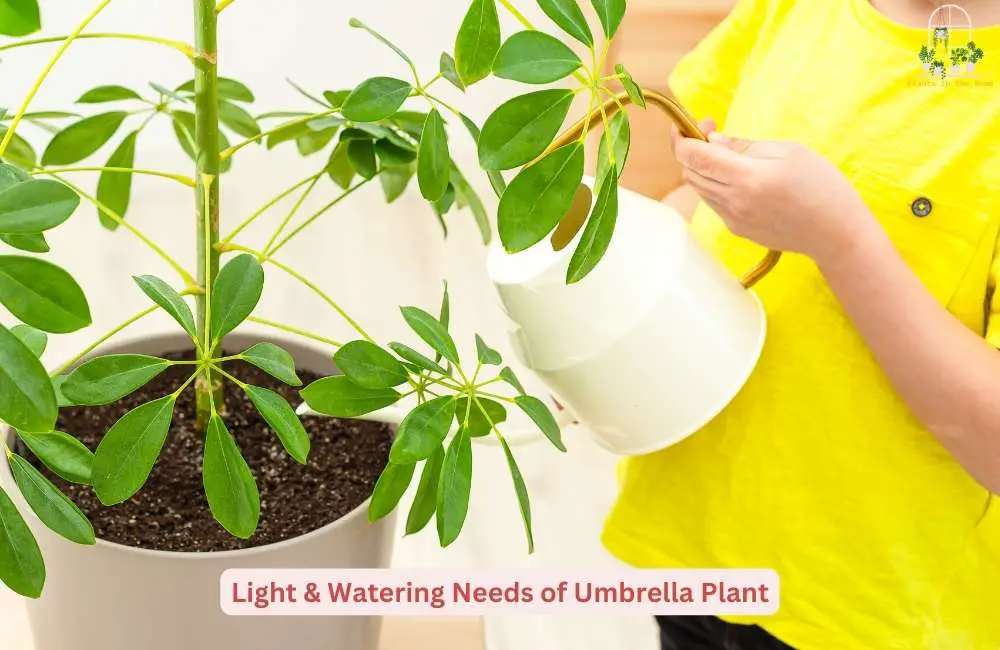
Like all plants, the Schefflera has its preferences regarding light and its surroundings. This isn’t just about making your plant look lively; it’s about ensuring its health and longevity. In this guide, we’ll delve into the ideal lighting conditions for the Schefflera and how to spot signs of too much or too little light. We’ll also touch upon where to ideally place these plants in your home to keep them thriving. Let’s shed some light (pun intended) on the subject!
The Perfect Spot: Light Requirements
- Brightness: Schefflera plants crave bright, indirect light. Think of a cozy spot with plenty of daylight but not directly under the sun’s harsh rays. If you’ve ever lounged in a sunny spot in your home that’s filtered by curtains or blinds, that’s the kind of light we’re talking about!
- Window Direction: An east or west-facing window hits the sweet spot. This gives them a good balance of morning or evening sunlight without the intensity of midday rays.
- Direct Sunlight: A little direct sunlight won’t harm them. However, keep an eye out! If you see the leaves turning a burnt brown or looking like they’ve been crisped, it’s a sign that they’re getting too much direct sun. Relocating the plant a tad farther from the window should do the trick.
What to Avoid: Placement Concerns
One thing to remember – Schefflera plants despise drafts. Cold gusts or even bursts of hot air can stress the plant. It’s like how we might feel a sudden chill or warmth when a door is opened, but plants can’t just throw on a sweater or fan themselves!
If you’ve got your plant near a window or door that’s frequently opened and closed, or perhaps close to an air vent, it might be time to reconsider its location.
Finding the right spot for your Schefflera plant doesn’t have to be complicated. Think of it as finding the coziest, most comfortable spot in your home, minus the drafts, and you’re on the right track. With some observation and care, your plant will reward you with its beauty for a long time to come!
Watering Needs
Imagine sipping a cup of perfectly brewed tea – not too hot or cold, just the right amount of flavor. That’s the precision and balance your Schefflera seeks when quenching its thirst. Like us, our leafy companion has unique hydration needs after an intense workout or a spicy meal. Overwater, and it feels like it’s drowning. Underwater, and it starts to thirst. Let’s unravel the secrets of serving our Schefflera the perfect drink!
The Art of Perfect Hydration
Watering isn’t merely a routine task; it’s an art form! While we often rely on a set schedule for most plants, the Schefflera asks us to be a bit more intuitive and attentive.
The Touch Test
The first step to mastering this art is getting in touch (quite literally) with your plant. Dive a finger about an inch into the soil. If it feels parched, it’s time for a hydration session. If it’s damp, hold off for a while. Following this touch test is like having a direct line of communication with your plant. And from personal experience, it’s a game changer!
Water Quality
Imagine prepping a spa day for your Schefflera (plants deserve pampering, too!). While they aren’t divas, they prefer the kind of water they soak in. City tap water loaded with chemicals can be a tad harsh. Letting the water sit out overnight is a detox session, giving any chlorine present ample time to evaporate. Consider it a simple trick to give your plant that extra bit of love.
Other Hydration Hacks
Hydration is more than just watering—it encompasses the broader spectrum of ensuring your Schefflera receives the moisture it needs, both from below and around. Dive into these lesser-known yet crucial hydration hacks that promise to keep your plant in its prime.
Humidity Heaven
Scheffleras are used to the more humid climates of their native lands, so they appreciate a humid environment. If you live in a particularly dry region, consider placing a humidity tray (filled with water and pebbles) under your plant or investing in a room humidifier. It’s their version of a tropical vacation!
Yellow Leaves Alert
If your Schefflera starts to showcase yellow leaves, it’s sounding the alarm – something’s off in the watering department. It’s usually a sign of overwatering. But fear not! Dial back the water, ensure good drainage, and you’ll have it back in tip-top shape in no time.
The Perfect Watering Routine
Getting your Schefflera’s watering routine down to an art can feel like a juggling act. But with a clear roadmap, you’ll navigate this with finesse. Let’s delve into a foolproof watering regimen that’s easy to follow and promises a thriving plant.
- Check Soil: Begin with the touch test every few days.
- Water Quality: Prep chlorine-free water for the plant.
- Hydration Time: Water thoroughly until you see some water escape the bottom, ensuring the roots get their fill.
- Humidity: Keep the surrounding environment mildly humid, especially during drier months.
- Monitor Plant: Watch for any changes in leaf color or texture.
There you have it – your step-by-step guide to ensuring your Schefflera stays lush, vibrant, and hydrated! Remember, it’s all about finding that sweet spot and staying in tune with your plant’s needs. Happy watering!
Fertilizer and Pruning
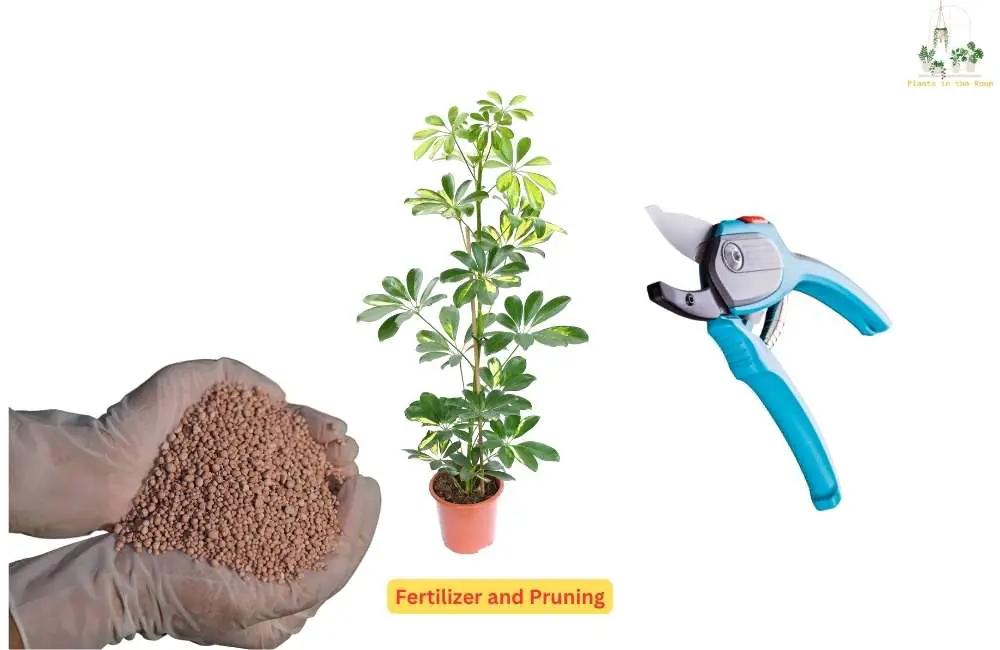
So, you’ve got the basics of Schefflera care down. Huzzah! But here’s the thing about plants: Just like us, they can benefit from extra pampering occasionally. Think of it as treating your Schefflera to a spa day – a little nourishment, a fresh haircut, and voilà! Your plant feels rejuvenated, and you get to bask in the glow of its radiant health. Let’s delve into these spa treatments, shall we?
Offering Nutritional Boosts: The Fertilizer Finesse
Every living thing needs sustenance. And while your Schefflera gets a lot from the soil and water, imagine how you’d feel if you ate the same meal daily. A little boring, right? That’s where fertilizers come in, giving your plant a delightful boost of varied nutrients.
Feeding Your Plant
Just like we have specific times when we feel hungrier (I’m looking at you, brunch-time), the Schefflera has its growth spurts primarily during the spring and summer. This is when it’s craving some extra nutrients. Opt for a balanced liquid houseplant fertilizer, offering it once a month during these warmer months. Come winter, your plant is in chill mode. So, you can skip the fertilizing until it’s ready to grow again in spring.
The Snip and Shape Session: All About Pruning
While plants don’t strut their stuff on catwalks, they appreciate looking their best. And sometimes, that means shedding excess weight or sprucing up their shape.
Taming the Growth
You might notice your Schefflera starting to resemble a lanky teenager, with some branches reaching out in all directions. This is your cue! Grab a clean pair of pruning shears and get ready for a trim. Not only does this maintain a compact, bushy appearance, but it also encourages healthy growth. If you notice it stretching towards a light source or getting too big for its boots (or pot, in this case), it’s time to give it a little shape-up.
A Few Pro Tips for Extra Care
- Stay Clean: Dust can accumulate on the Schefflera’s large leaves, blocking vital light. A gentle wipe with a damp cloth can work wonders.
- Rotate Regularly: Give your plant a little twirl every couple of weeks. This ensures that all sides get equal sunlight, promoting even growth.
- Watch for Pests: While discussing extra care, watch for pests. If you spot any, address them promptly to ensure your Schefflera remains healthy.
Adding these ‘extra touches’ to your plant care routine can differentiate between a good-looking Schefflera and an absolutely show-stopping one. Think of it as a beauty regimen for your green buddy, keeping it in the prime of health and style. Cheers to happy, thriving plants!
Dealing with Pests and Problems
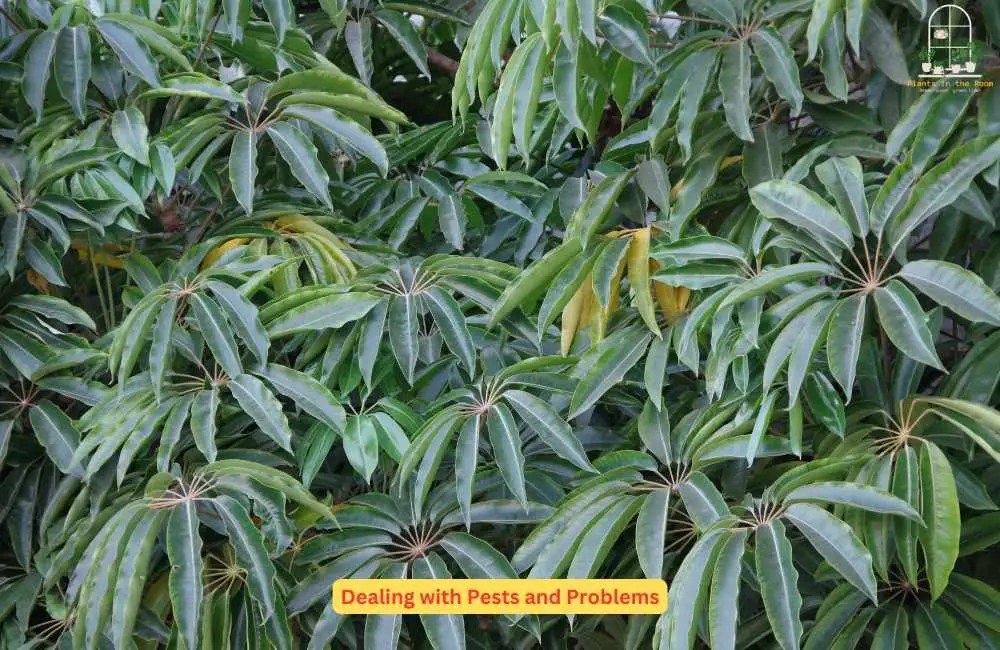
Nobody seems to escape the occasional uninvited guest or hiccup, even in the plant world. Picture this: You’re enjoying a moment of peace, admiring your Schefflera’s radiant growth, and then—wait, what’s that tiny critter doing there? The world of plants has its share of pesky intruders, but fear not! Like any minor setback in life, there’s usually a straightforward solution at hand.
Pesky Pests: Identifying and Eliminating
You might be doing everything right – the right amount of water, perfect light, and regular fertilizer – but pests can still decide to crash the party. Here’s how you can identify and show them the door:
- Mealybugs: These appear as tiny, cotton-like white masses on your plant. They love to suck the juices out of your Schefflera and can multiply rapidly if not dealt with.
- Spider Mites: You might first see fine webs around your plant. On closer inspection, you’ll find tiny, reddish-brown mites. These critters also enjoy feasting on plant juices and love dry conditions.
- Aphids: These are small, soft-bodied insects that can be green, black, or even pink. Often found on the undersides of leaves, they’re another juice-loving bug.
The Solution
Enter the magic potion: soapy water. A gentle spray of a soapy water mixture can be quite effective in getting rid of these unwelcome guests. Ensure you cover both the top and underside of the leaves. After a few hours, gently rinse your plant with plain water to wash away any residue and fallen pests.
Decoding the Leaves: Yellowing and Dropping
While it’s always a bit heart-wrenching to see a plant struggling, yellowing or dropping leaves are its way of sending out an SOS. Here are a couple of reasons this might be happening:
- Overwatering: If the soil stays wet for too long, the roots can rot, depriving the plant of essential nutrients. This often results in yellow leaves.
- Insufficient Light: Scheffleras love bright, indirect light. They might protest by shedding some leaves if they’re not getting enough.
The Fix
It’s time to play detective! First, do the touch test to see if the soil is overly wet. If it is, adjust your watering routine. Next, consider the plant’s placement. If it’s in a too-shady spot, move it closer to a light source, but avoid direct sunlight which can scorch the leaves. Remember, balance is the name of the game.
In the grand scheme, pests and problems are but minor bumps on the road to successful Schefflera care. With a little observation, prompt action, and patience, your plant buddy will thrive in no time. Here’s to resilience and radiant greenery!
Final Thoughts
Taking care of a Schefflera, or the ever-stunning Umbrella Plant, is like nurturing any relationship—it requires understanding, attention, and a touch of love. From the nuances of watering to the art of fertilization and pruning, each step you take contributes to the overall well-being of this magnificent plant.
While challenges like pests and environmental adjustments might arise, with the knowledge provided in this guide, you’re well-equipped to address them. So, as you embark on this green journey with your Schefflera, remember that every effort, no matter how small, echoes in its vibrant leaves and robust growth. Happy planting!
FAQ: Schefflera Care
1. What is Schefflera?
Schefflera is a popular houseplant commonly known as the “Umbrella Plant.” It earns its name from the unique pattern of its leaves, which resemble the spokes of an umbrella.
2. How much sunlight does a Schefflera plant need?
Schefflera plants thrive in bright, indirect light. However, they can adapt to medium light areas. Direct sunlight can cause leaf burn, so it’s best to avoid placing them in spots where they receive harsh sun rays.
3. How often should I water my Schefflera?
It’s best to let the top inch of the soil dry out between waterings. Over-watering can lead to root rot, so ensure the soil remains slightly moist but never soggy.
4. Why are the leaves on my Schefflera turning yellow?
Yellow leaves can be a sign of over-watering. It’s essential to check the moisture level of the soil and adjust your watering routine. If the pot lacks proper drainage, consider repotting.
5. Can Schefflera plants be pruned?
Yes, they respond well to pruning. Regular pruning helps maintain its shape, encourages bushier growth, and can rejuvenate an older plant.
6. Are Schefflera plants toxic to pets and humans?
Yes, Schefflera plants can be toxic when ingested. They contain calcium oxalate crystals, which can irritate the mouth and digestive tract. It’s best to keep them away from pets and young children.
7. How can I propagate my Schefflera plant?
You can propagate Schefflera using stem cuttings. Take a healthy stem, dip it in rooting hormone, and plant it in a pot with well-draining soil. With proper care, it should root within a few weeks.
8. What type of soil works best for Schefflera?
A well-draining potting mix is ideal. You can use a general-purpose houseplant soil mixed with some perlite or sand to enhance drainage.
9. How do I handle pest problems on my Schefflera?
Schefflera can sometimes attract pests like aphids, scale, and spider mites. Regularly check your plant for pests and treat with insecticidal soap or neem oil if needed.
10. My Schefflera’s growth seems stunted. What could be the reason?
Stunted growth can be due to several reasons – insufficient light, over-watering, or lack of nutrients. Ensure your plant receives adequate light, adjust your watering routine if necessary, and consider feeding with a balanced fertilizer during the growing season.

